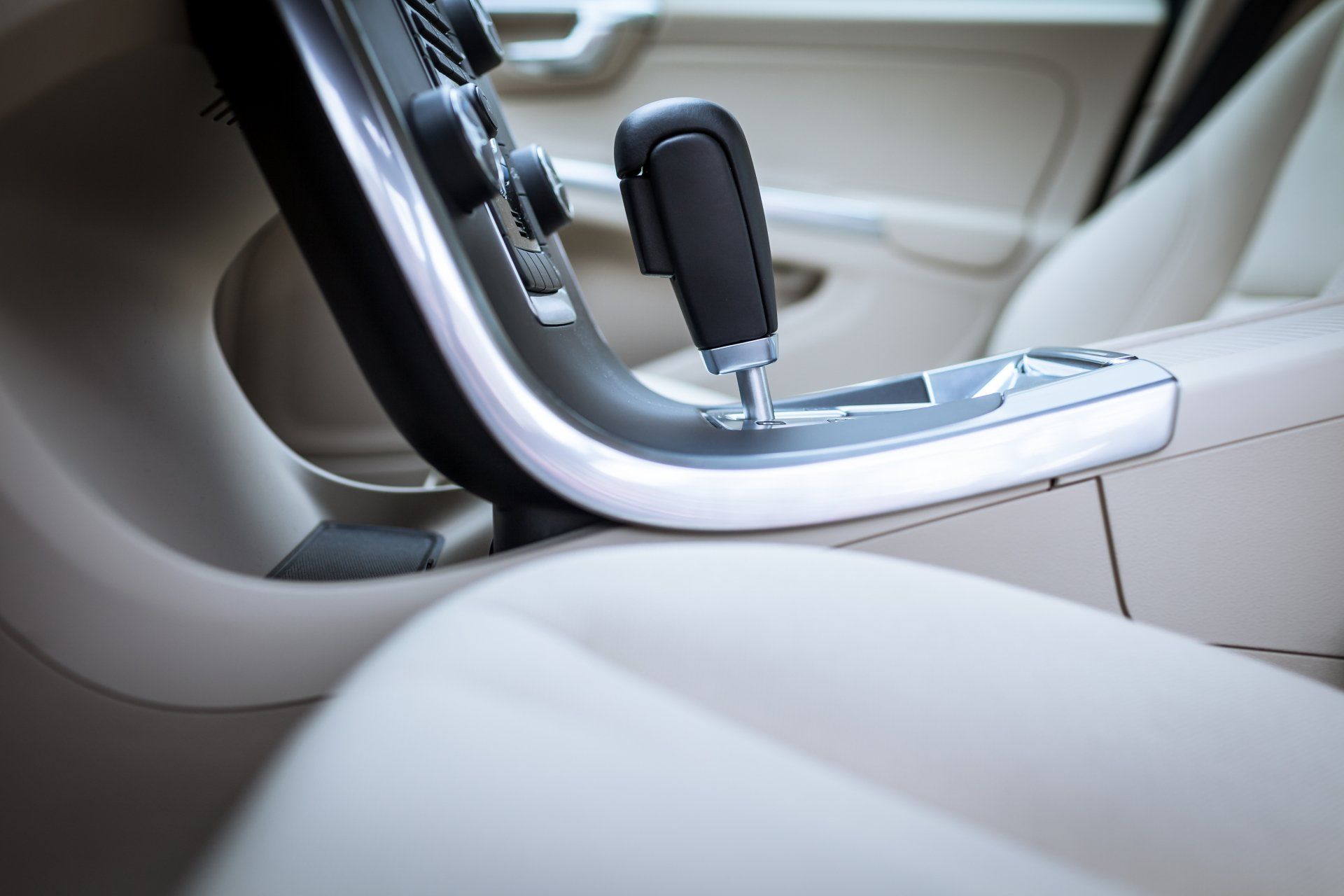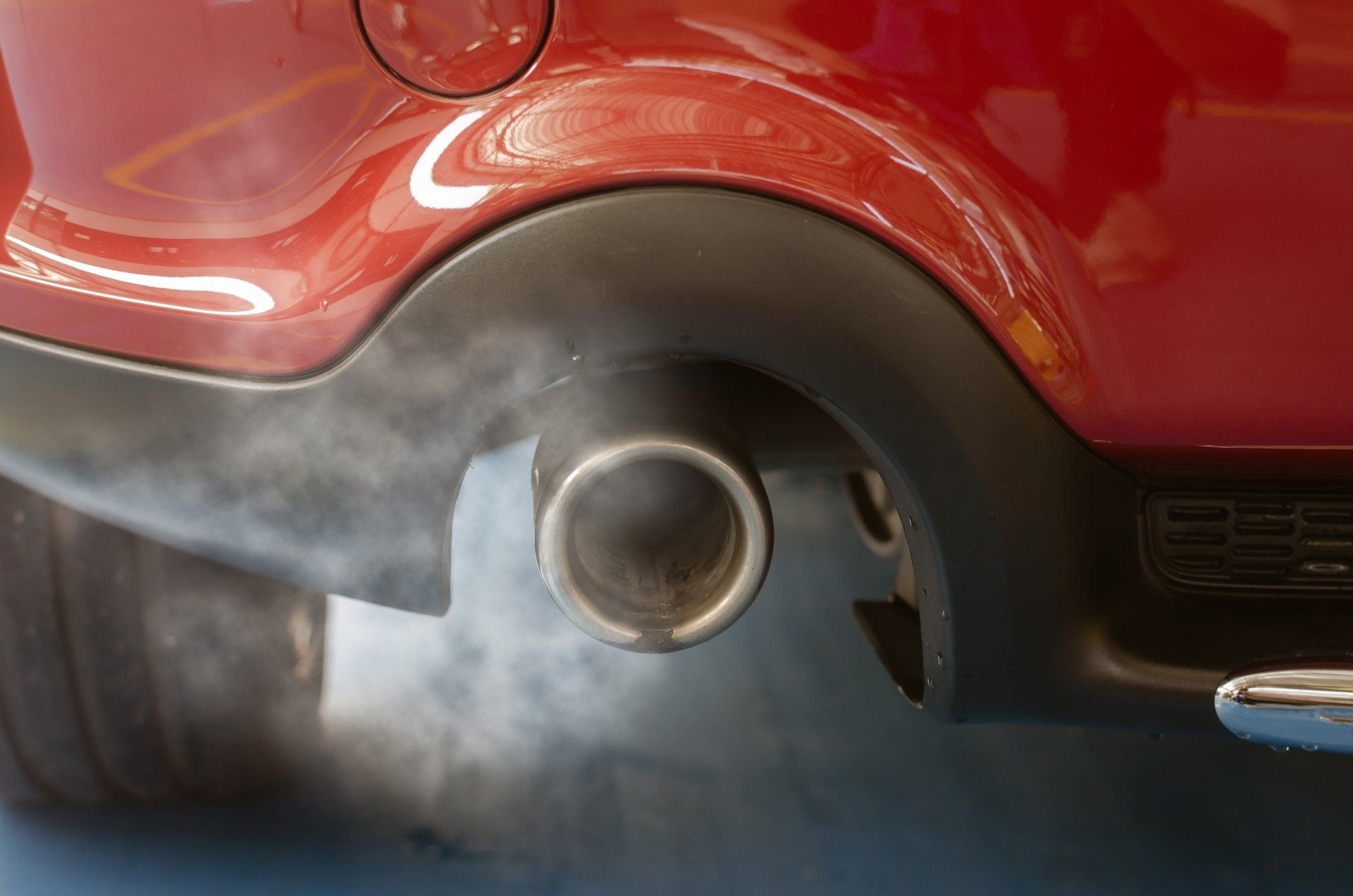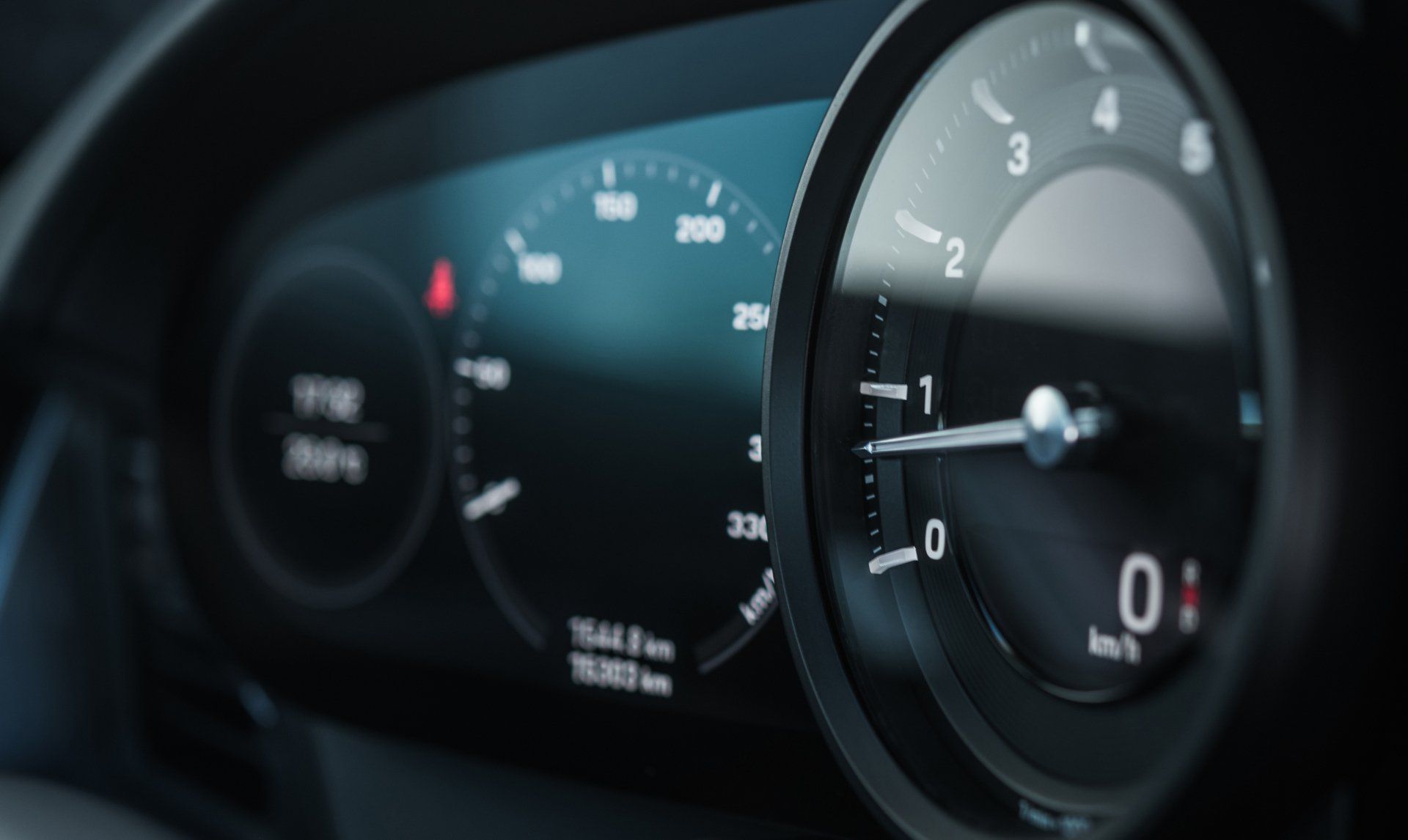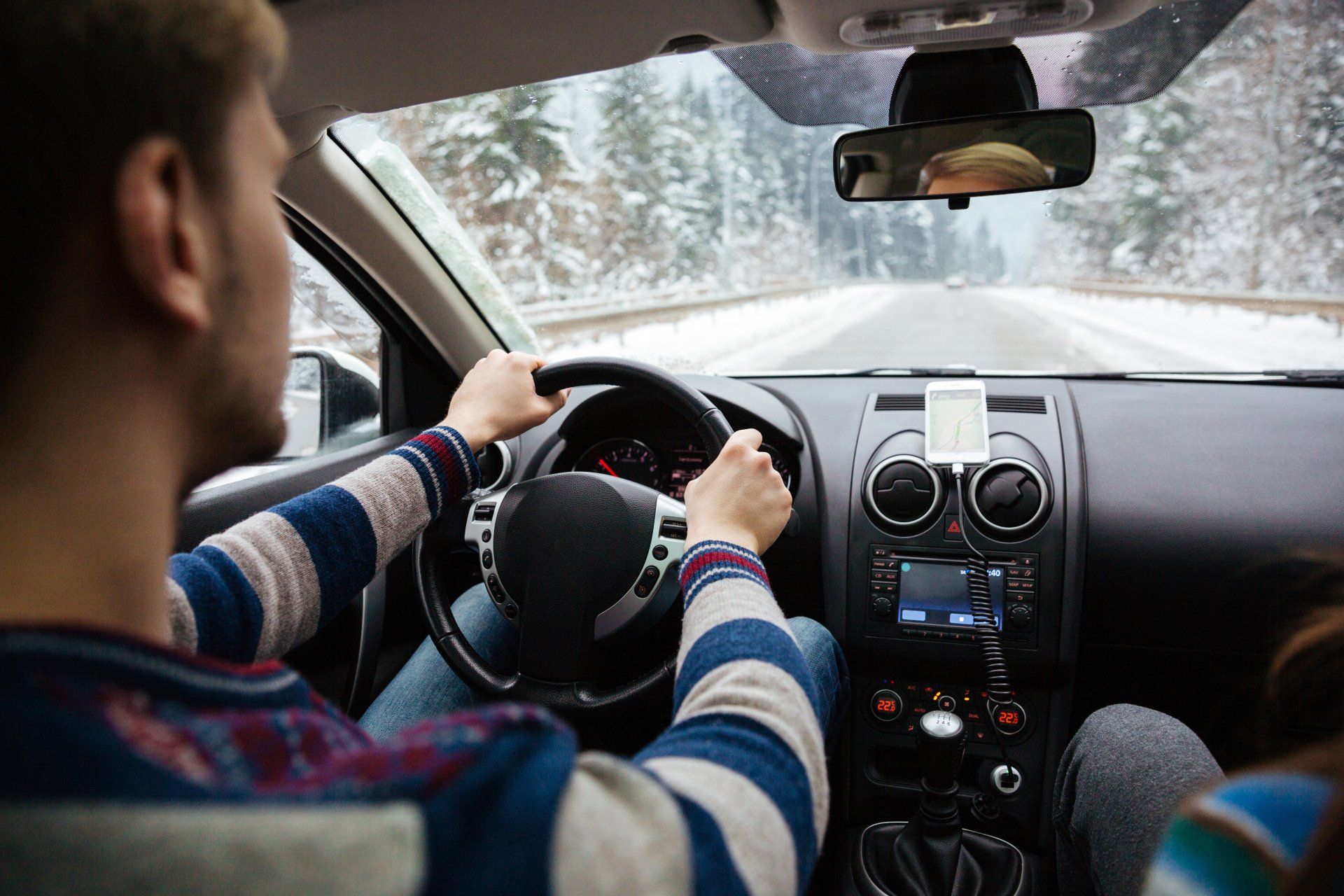Blog
Blog

04 Mar, 2021
It’s easy to get sucked Into a vortex of misleading car maintenance tips when it comes to taking care of your automobile. Finding the right collision repair center or car detailing service can be a daunting task as there’s an endless number of service providers to choose from. For that reason, the professionals at J&E Tokyo Auto Collision Center have made this guide to help you to make the best decision when it comes to automobile repairs and f leet maintenance . Choose a shop for your brand of car Every vehicle is built differently, and the results of an unfortunate accident will vary according to each model. Having a team of technicians that are trained and experienced in handling a collision repair that is specific to your brand of car is necessary when choosing a repair center. This will ensure that your car or truck has undergone the required process of restoration without incurring unnecessary costs and having inferior parts installed into your vehicle. Understanding Your Fleet If you’re a fleet owner, then you’ll appreciate that a dysfunctional vehicle fleet will undoubtedly cripple the day-to-day operations of your business. Arranging for professional fleet maintenance and repair requires working with a team of technicians that understand the importance of a well-maintained fleet. Such professionals should be ready to take on fleet maintenance operations that range from small trucks to long hauls. How well do you know your technicians? An automobile is a very serious investment. The collision repair team that you choose to allow to work on your vehicle will determine your vehicles’ life span and overall performance. Some key aspects to consider when choosing the right repair shop or car detailing center are the number of recognized certifications and positive customer feedback they have received during their time of service. As a first-time customer, proper certification will act as a piece of assurance that the team you have chosen will carry out its tasks flawlessly, using professionally recognized procedures. Ask about warranties An extended warranty can give you peace of mind. It’s a relief to know when the company you have trusted your vehicle with has made you a promise and are willing to take responsibility in the case of an unfortunate event. However, certain collision repair, car detailing, and fleet management companies can get you to close deals without fully educating you on their vehicle service contracts or, even worse, not offer you a warranty at all. Make sure to speak with the relevant salesperson or customer service executive to give you a detailed explanation of their warranty policies. Ideally you also want the company to advise you on what you need to do to ensure you don’t breach the agreed terms and conditions of the contract. Ask for Referrals There is nothing more reassuring than having good referrals who have had experience with a service. Positive word of mouth and good customer feedback can be a great indication that the car detailing center that you have chosen provides an honest and efficient service to their clientele. Keep In mind that it is perfectly acceptable to ask your service provider for referrals of past customers so that you may get a clear idea of the quality of work they offer. With over 30 years of experience, J&E Tokyo is committed to providing its customers with high quality vehicle repair services. Our team of experienced and licenced body repair specialists, painters and technicians will bring your vehicle back to life. For more information about our services and to get in touch with our specialists, call us at 416-743-8888 or fill out our convenient contact form and one of our specialists will get in touch with you.

02 Feb, 2021
Although we’re starting to see a shift towards electric cars, the vast majority of vehicles on North York roads are those powered by fossil fuels. The chances are that the car parked in your driveway is, in fact, powered by gas. And one by-product of internally combusting fossil fuel is emissions from your vehicle’s tailpipe. However, did you know you can learn a great deal about the health of your car’s engine by observing the colour of your vehicle’s exhaust emissions? If you want to learn the causes of white smoke from a car exhaust or the causes of black smoke from a car exhaust , we suggest you read on to find out more. Black Smoke — Why? If you’ve ever noticed black smoke from your car’s exhaust , your natural reaction may be to panic. While most modern vehicles no-longer emit big, black clouds of car smoke from their exhausts, there could be a few reasons as to why this is happening. Firstly, it depends on whether your car is powered by petrol or diesel. If petrol, then the cause of black smoke from your car’s exhaust may simply be a case of poor air-fuel mixture. Combustion takes place by combining air and fuel with a spark. If there’s too much fuel, this can lead to black-coloured smoke. Rather than a cause for alarm, a quick visit and diagnostics scan by a trained automotive repair shop should help you get the problem identified. It could be as simple as a faulty sensor, a clogged air intake or filter or problematic fuel injectors. All of these fixes are relatively simple. If you’re driving a diesel-powered car or truck, then there may be a couple of other explanations behind the cause of black smoke from your car’s exhaust. If you own an older diesel-powered vehicle, then some amount of black smoke under load (such as hard acceleration or climbing a steep incline) may be expected. If you own a modern diesel with a DPF (Diesel Particulate Filter), then the occasional plume of black smoke may be down to the expulsion of built-up soot. In either scenario, it shouldn’t be a cause for concern. White Smoke — Should I be worried? A little white smoke from your car’s exhaust on start-up shouldn’t be cause for concern. On a cold day, it may not be smoke at all and just steam or condensed water. However, if you see larger plumes, the causes of white smoke from a car’s exhaust may necessitate a trip to a car specialist. Consistent white or grey smoke could be caused by your car’s coolant mixing with the engine’s combustion process. This isn’t good, as the coolant should never be part of such a process — and this means that if it has found its way there, there has to be a serious underlying problem. The first suspect may be the head gasket, which will inevitably lead to overheating. More seriously, it could be a blown cylinder head or cracked engine block — both of which are potentially catastrophic for a car’s engine. No matter the cause of white smoke from a car’s exhaust , you should stay vigilant and get it checked out. While it may be nothing, bringing it to a specialist auto shop may be best to stay on the safe side. Blue Smoke — Potentially Serious Finally, blue smoke — often very light blue or even pale grey — may be indicative of a more severe issue with your engine. Blue car smoke from an exhaust is a symptom of oil being burnt during combustion. This isn’t the same as an oil leak that leaves a patch on your driveway. This, rather, is an internal leak, which will eventually drain the engine of oil (perhaps without you even noticing it)! Blue smoke could be the result of a leaking valve seal — or worse, a piston ring. Both jobs require a partial engine rebuild, at the least. If you own a vehicle with a turbocharger, blue smoke may indicate an issue with the turbo. This may be accompanied by poor performance, such as sluggish acceleration. Once again, if you sight blue smoke in your rear-view mirror, it’s best to get your car inspected. Book an Appointment with J&E Tokyo Auto Collision If you need professional advice on why you’re witnessing car smoke from an exhaust , then our experts at J&E Tokyo are happy to help. We provide the best car and fleet repair services for customers in North York and can help with a proper and accurate diagnosis of any suspected fault on your car or truck. Give us a call at 416-743-8888 to learn more about our services or book an appointment with our team today!

13 Jan, 2021
Your car is likely one of your most prized possessions — and as such, it’s only natural to want to keep it in tip-top condition. But when it comes to everyday habits, you may be surprised to learn that some seemingly innocuous actions can cause severe damage to a car over time. Here’s a quick overview of some of the more common habits and how you can avoid them in the future. Driving with a Light or Empty Tank There are many schools of thought out there that suggest that topping up the minimum to keep your car’s tank continuously close to empty saves fuel on account of the reduced on-board weight. While this theory does have merit in practice, you may end up spending more in the long term due to severe damage to your car . As carefully refined as most fuel is today, it’s rarely 100% pure. Over time, particles and other foreign artifacts may end up settling at the bottom of your petrol or diesel tank. When a car’s tank is close to empty, the fuel pump inevitably draws these particles up. While the fuel filter should stop these substrates from doing damage to the engine, the fuel pump itself may end up either getting clogged or subject to undue stress. To avoid possible premature pump failure, it’s recommended that you instead keep your tank at over a quarter full—if not more. Overloading Your Car Overloading a car can have a dramatic impact on several components. While it’s tempting to assume that if you have space, it’s safe to pack it to the brim, it’s essential to understand that each car has been designed to accept a maximum weight. Adding excess weight can cause severe damage to a car’s components. Components that can suffer damage include, but are not limited to, suspension, wheels, tires, and excess stress on engine and transmission components. It’s important to note that adding great weight can also lead to changes in handling characteristics and an increase in stopping distances. Always consult your vehicle manufacturer’s specifications for maximum carrying capacities. It’s also important to note that many makers specify different tire pressures for different weights. Revving a Cold Engine If you own a car with an internal combustion engine, you might not be aware that the most wear and tear on your vehicle’s engine is when it’s cold. This is because your traditional motor has many moving parts which cause friction. It’s why we add oil to engines — to reduce friction caused by metal-on-metal contact. Your car’s engine oil is most effective when hot and your engine is at operating temperature. To prevent premature wear and tear on an engine, it’s advised to wait until operating temperature is reached. If you cannot practically do so while stationary, it’s recommended your drive gently until the temperature gauge is in its normal operating zone. Sudden Acceleration or Braking Can braking too hard damage a car? While it may not cause severe damage to a car in the short-term, constant and sudden acceleration or braking will cause excessive use of fuel, as well as reducing the lifespan of several critical components. Heavy and unnecessary acceleration without factoring in your surroundings is a sure-fire way to burn excess petrol. In contrast, sudden braking without anticipation can not only be jarring to passengers and those behind you, but it will also add undue strain to the braking components of your car. Therefore, it’s advised that you accelerate in a smooth and gentle fashion, using just enough gas to get up to speed without causing inconvenience to those around you. Similarly, the application of brakes can be smooth and less wasteful, especially if you anticipate things such as red lights and stop signs, coasting to a stop with minimal brake application. Missing Scheduled Check-ups Sticking to the recommended maintenance schedule is perhaps one of the most effective ways to avoid unintended damage to your car. For example, missing a simple check-up can lead to how to damage a car battery, damage an engine and much more. Oil changes, brake check-ups, and regular services are all critical to extending your car’s service life and each of its individual components. Frequent fluid changes will help the service life of the engine, brake and transmission systems. Book an Appointment with J&E Tokyo Auto Collision If you ever need further advice regarding car maintenance or bodywork repairs, we’re happy to give you a helping hand. We provide the best car and fleet repair services for customers in North York to ensure their peace of mind, regardless of driving habits. Give us a call at 416-743-8888 to learn more about our services or book an appointment with our team today!

10 Dec, 2020
With the holidays fast approaching, the number of people driving on the roads is bound to worsen already poor winter road conditions. Icy roads, low visibility, and freezing temperatures are just a few things that make car owners understandably dread winter driving. Luckily, there are a few simple tips you can keep in mind to stay safe on the roads this winter. Clear Ice and Snow Off Your Car If you’ve driven a car during previous winter seasons, you’re probably familiar with the cars that drive around with ice and snow-packed onto their windows and roofs. These are the drivers who drift into your lanes and make you exclaim “where did this person learn how to drive a car!” It may seem like an easy step to remember, but many drivers forget to clear snow off their car before they get on the road. The ice and snow pile up could be quite dangerous - especially when they fly off the car while in motion. Keep an ice scraper or similar tool on-hand to remove ice and snow from your car’s windows. Even if it doesn’t seem like there’s much snow covering your windows, it can quickly build up once you start driving around in the snow. Need to pick up an extra ice scraper or want help choosing ice and snow removal tools? Contact us today for recommendations. Keep a Safe Distance Distance is especially important to consider when you’re driving on winter roads. It’s harder for cars to start and stop in winter weather especially during snowfall and in freezing temperatures, which means you should give cars in front of you a wide berth. Stay a safe distance behind the drivers in front of you, especially on multi-lane roads, to avoid preventable accidents. To make sure you’re giving the cars around you enough distance, ensure that your headlights are at night or heavy snowfall so that you’re visible to other drivers and can see them as well. We can help provide recommendations on the different headlights that can break through foggy winter air and dense snowfall. Be Visible One could successfully argue that being able to see the road is the first and most important prerequisite to safe driving. Before you go out driving on wintery roads, make sure that you thoroughly check your windshields for cracks and damage, which is liable to get much worse once you’re driving in freezing temperatures. Auto parts dealers like J&E Tokyo can help you replace cracked and damaged windshields that break and shatter from cold temperatures. We can also help you replace wiper blades to handle cold temperatures and snowfall since old wiper blades tend to freeze up and stop working when the temperature starts dropping. Plan Your Route in Advance It’s important to plan your routes in advance when driving in winter weather. Planning a route can help you avoid running into unforeseen road closures or car pile-ups in high-traffic areas. When you’re planning a route, double-check that your tires are at their recommended PSI levels per your owner’s manual and that your battery’s charge is sufficient for your next route. Make sure that you plan out a route in advance with a set of dealer-certified winter tires, and check with a certified auto dealer that your battery’s charge and capacity is appropriate for winter driving. Taking extra precautions with a pre-planned route can help you avoid hours of being stuck on the road in heavy winter weather. Book an Appointment with J&E Tokyo At J&E Tokyo, we’re committed to helping our customers stay as safe as possible on the roads. We provide customers with the best auto body and fleet repair services in North York, so that they can have the peace of mind they deserve when they’re driving, no matter the season or time of year. To learn more about our services or to book an appointment with J&E Tokyo, give us a call at 416-743-8888 , or contact us online at https://www.jetokyo.com/contact-us.

05 Nov, 2020
It can be easy to forget that your car needs a thorough checkup before winter. The winter season can wreak havoc on vehicles that aren’t ready for high winds and heavy snowfall. Luckily, you’ll just need to take a few simple steps to ensure your car is ready for the chilliest months. In this article, we’ll cover the five most effective ways to prepare your car for the winter. Take a Look at Your Tires Tires usually take the biggest hits before and during the wintertime. Cold air and slippery roads can quickly reduce your tires’ pressure and cause them to erode and lose traction. Check your owner’s manual for your tires’ recommended pounds per square inch - or PSI - to make sure they have enough pressure. If the tires you use right now don’t have much traction during heavy snowfall, you can also consider swapping them out for winter tires. Knowing when to change to winter tires can prevent you from skidding and losing traction on snowy and icy roads. Most auto dealers near you can help you choose from different winter tires that are made to perform in inclement weather. Don’t Make Bets With Your Battery Batteries will keep your gas flowing even in the coldest temperatures, as long as they can stand under the workload. Your battery needs to work extra hard to pump gas with the right viscosity (which we’ll cover in a moment) through your vehicle. This means you should always check your battery’s charge and capacity with a certified auto dealer for the safest winter driving. It’s also a good idea to keep a spare set of jumper cables handy in your car’s emergency kit, in the event your battery dies and needs a boost. Bear in mind that jumper cables won’t do any good for a battery that’s simply reached the end of its life. It’s best to use freshly tested batteries that you can jumpstart in emergency situations before you go out on the winter roads. Be Vigilant About Visibility Being able to see is, arguably, the first prerequisite to safe driving. This is especially true if you’re driving on wintery roads. Always check your windshields for cracks or other signs of damage, since these only get worse in freezing temperatures. Cracked or damaged windshields can shatter and break suddenly if it gets cold enough outside. You’ll also need to replace your wiper blades if you haven’t done so in a while. Old wiper blades will freeze in winter temperatures and buckle under the weight of too much snow. It’s best to choose new wiper blades from a reputable auto parts dealer in your area. Stay on Top of Your Oil When was the last time you checked on or replaced your car’s oil? If you can’t remember the answer to that question, then it’s crucial that you visit a mechanic shop nearby as soon as possible. Oil needs to be at the right level of viscosity, or consistency, to keep your engine lubricated and free of debris. Cars that leave their oil levels unchecked are just asking to be stranded on the side of the road. As such, make sure you check your oil levels and keep an eye on your mileage before you try to do any serious driving in winter weather. Keep An Emergency Kit You can't anticipate everything that can happen on the road, no matter how many precautions you take. Keeping an emergency kit is essential for just that — emergencies. Emergency kits for winter driving usually include all of the basics, such as jumper cables and a pumped spare tire. However, to be well-prepared for emergency situations (like getting stranded or being unable to start your car), you should also consider packing things like a de-icer, something to scrape ice from your car, salt or sand to free up your tires (and, of course, a pair or two of warm clothes). Visit Our Auto Collision Centre Today We hope this article has been helpful in providing you with some valuable tips on how to stay safe by prepping your car for the colder months! At J&E Tokyo Auto Collision, we are proud to be your go-to certified auto dealers in the GTA. If you are looking for a trusted team to help you get your vehicle ready for the winter elements, we’re here to help you get your vehicle tuned up and prepared. To get started, contact us today by filling out our online form!

06 Oct, 2020
Minor accidents, a dead battery, flat tires — no matter how far you’re driving or where you’re going, there’s always a chance you’ll find yourself stranded with a damaged car on your hands. A car survival kit can mean the difference between getting back on the road quickly and waiting for a repair company to tow and fix your car. However, developing emergency preparedness for car-related issues can be tricky. That’s why we’ve developed this list of must-haves in your car’s survival box, so you can always be ready for whatever comes your way on the road. Small Tool Kit Thankfully, most common car issues can be fixed by yourself. However, to fix them, you’ll need to make sure you have the proper tools on hand. While you’ll want your average, everyday tools — screwdrivers, pliers, and vice grips — you’ll also want some tools made specifically with car repairs in mind. This includes jumper cables, an adjustable wrench, a tire pressure gauge and even a jack. In your tool kit, you may also want to store needed supplies. This can include fluids such as oil or antifreeze for emergency, or even washer fluid. Car Escape Tools Your car is meant to keep you inside so that you’re safe. However, in the case of an accident, these features can actually put you in harm’s way. That’s why it’s important to have tools, such as a seatbelt cutter and something to break your windshield, on hand. If you were to be caught in a rollover, these tools could help you escape the vehicle and get to safety. And while you could use items already in your car in these situations, during an accident every second counts. That’s why having specialized tools on-hand is important. Also, rather than adding them to your survival box, you’ll want to keep these tools within reach of the driver seat. Cell Phone Charger The only thing worse than being broken down and stranded on the side of the road is being broken down and stranded on the side of the road with no phone. As a result, keeping a spare charger — preferably a version that can be used in the car or a wall outlet — is crucial. In better situations, you’ll need your phone as an extra safety precaution and to let people know where you are or if you’re running late. In less fortunate situations, you’ll need your phone to call a tow truck and make plans with a repair centre. Even if your car doesn’t break down, there are still good reasons to keep a spare phone charger in your vehicle. For example, when embarking on a long trip where you’ll be using your phone to stay in contact with family and friends, it’s always beneficial to have a phone charger on hand. First Aid Kit It’s always better to be safe than sorry. While it’s unlikely to sustain any injuries while driving without being involved in an accident, you never know when you’ll need a medic kit. This is especially true if you drive to hiking trails often or there is a possibility where you’ll otherwise be exposed to potentially dangerous situations. Even if it’s only a minor wound (such as a small laceration), having the supplies on hand to treat and patch the wound is always appreciated. Conclusion No matter how well you practice emergency preparedness, there’s always the chance that unexpected accidents or issues will leave your car undrivable. If you find yourself needing auto or collision repair in the North York area, our team J&E Tokyo Auto Collision Inc. are armed with a staff of skilled, ethical mechanics to meet your needs. For a quote, get in touch with us here !
221 Toryork Drive
North York, ON
M9L 1Y2
©2020 All Rights Reserved J&E Tokyo Auto Collision Centre Powered by OneLocal Privacy Policy
Find Us
221 Toryork Drive
North York, ON
M9L 1Y2
© 2024
All Rights Reserved | Powered by OneLocal
©2020 All Rights Reserved | J&E Tokyo Auto Collision Centre | Powered by OneLocal | Privacy Policy